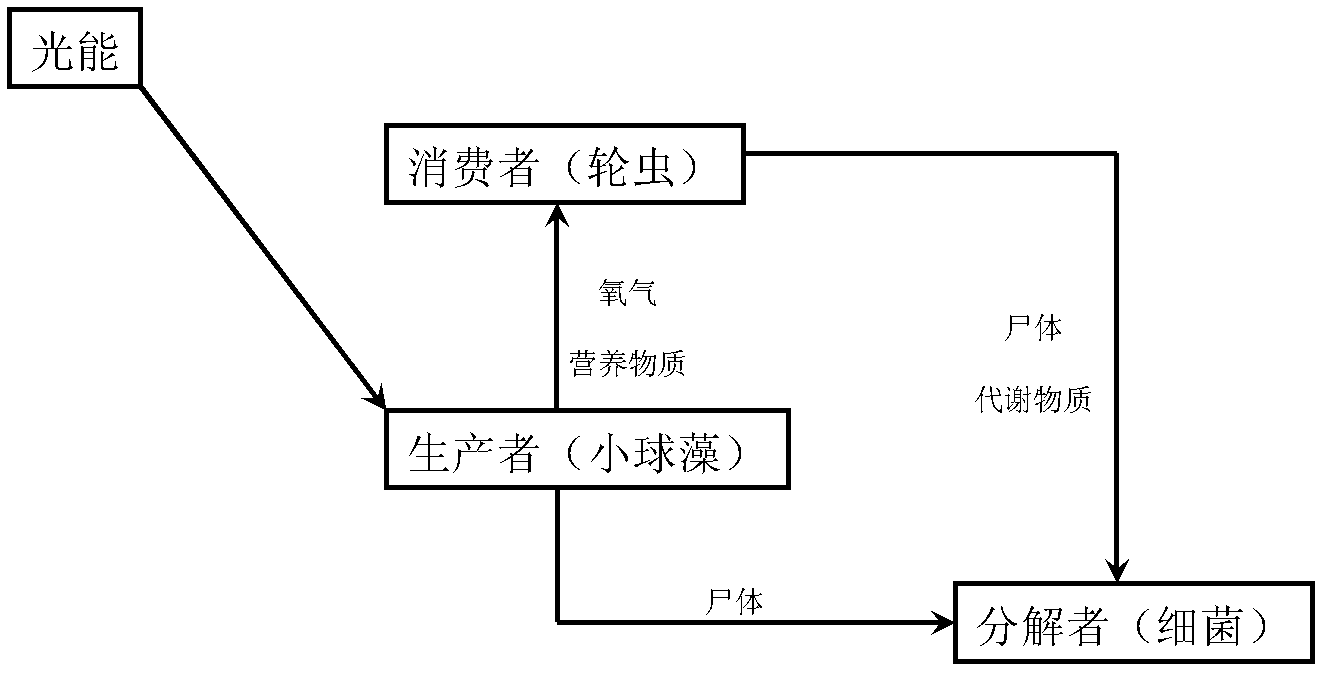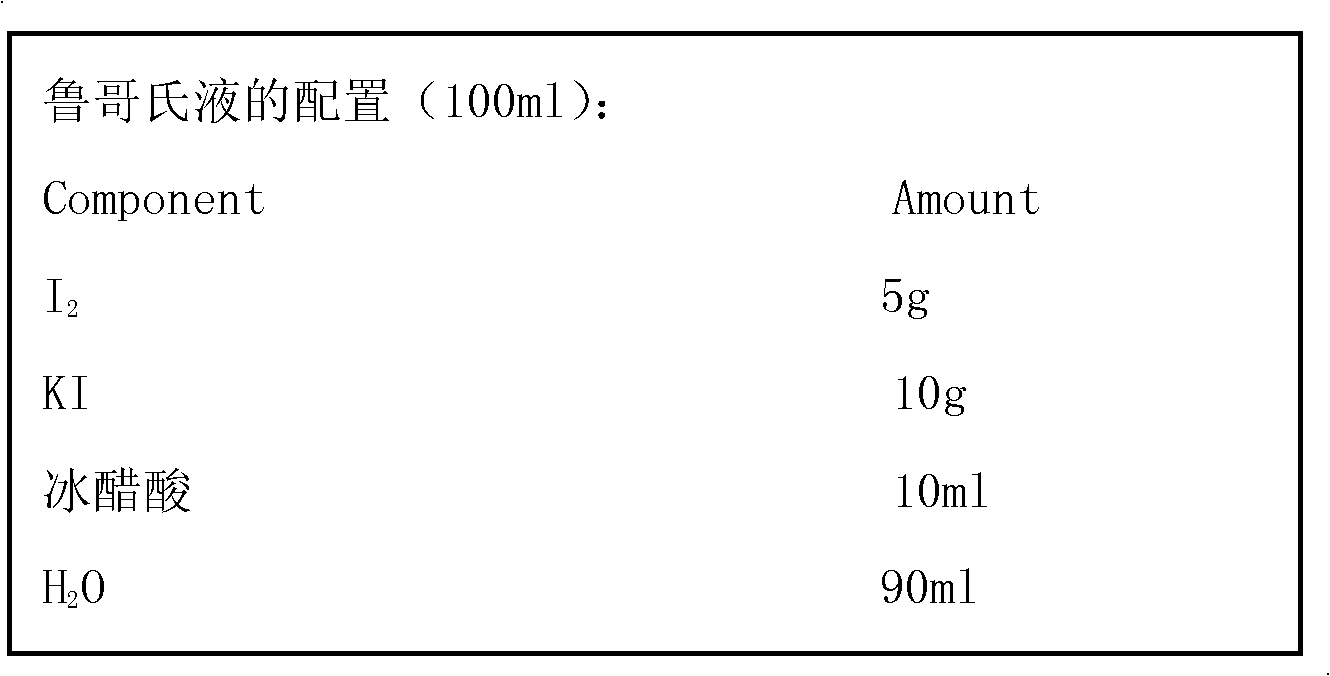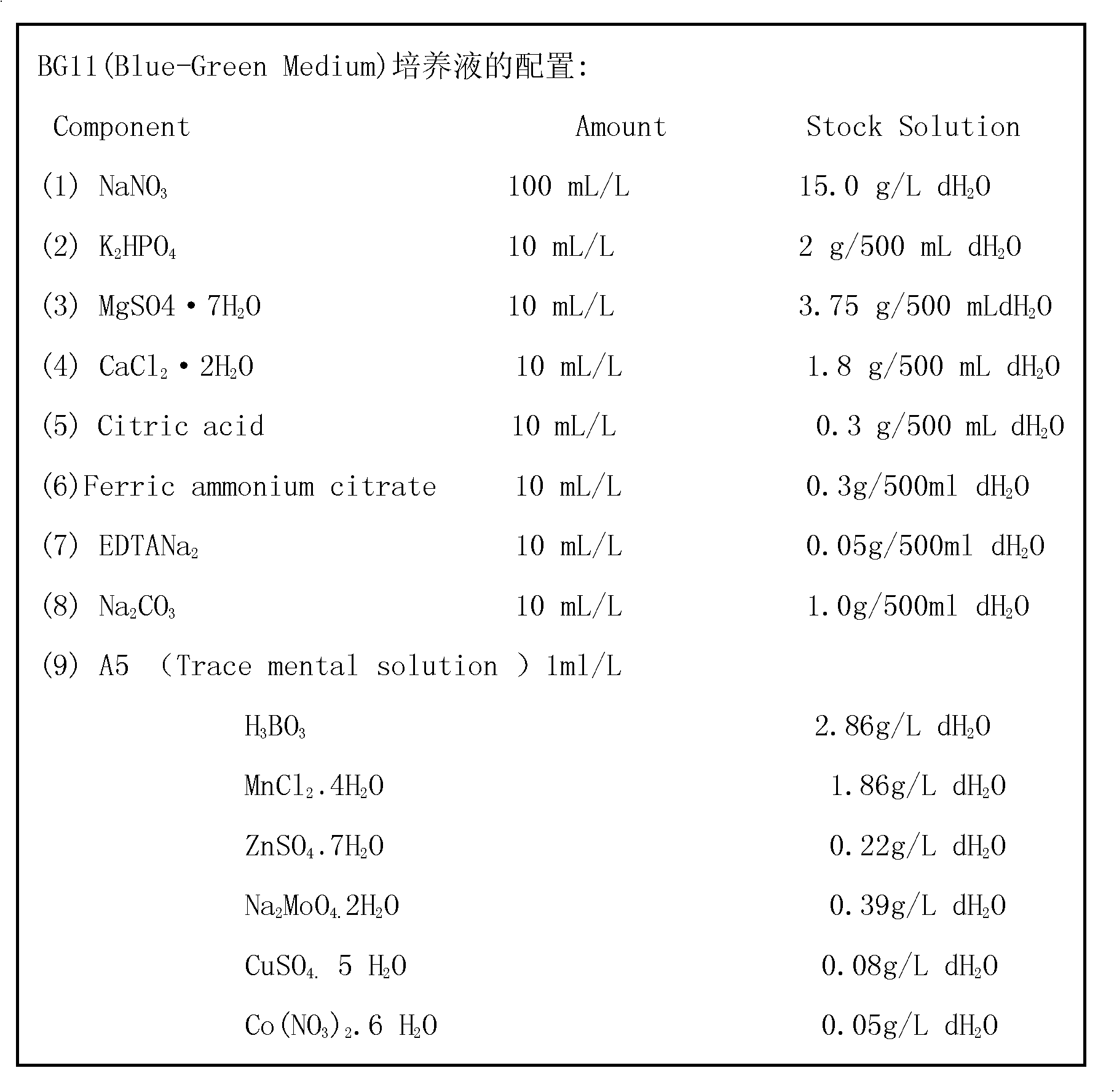A kind of co-cultivation method of freshwater rotifers and chlorella
A technology of co-cultivation and chlorella, applied in the direction of microorganism-based methods, biochemical equipment and methods, single-cell algae, etc., can solve the problem of rare rotifer isolation and control research, inapplicable rotifer safety control research, and great impact major issues
- Summary
- Abstract
- Description
- Claims
- Application Information
AI Technical Summary
Problems solved by technology
Method used
Image
Examples
Embodiment 1
[0026] O in this example 3 The dominant rotifer in the / BAC advanced treatment process - the process of indoor perennial cultivation of rotifers. A method for co-cultivating freshwater rotifers and chlorella, the steps of which are:
[0027] 1. O 3 Determination of dominant rotifers in / BAC advanced treatment process:
[0028] From March 2010 to April 2011, Shenzhen used O for a water plant in the south 3 / BAC advanced water treatment process The zooplankton population structure of each process flow in the water plant is investigated for a period of one year, and samples are taken in the middle of each month for quantitative and qualitative analysis. According to the process flow of the water plant, the sampling points are set up with factory water, activated carbon tank filtered water, activated carbon tank, sand filter tank, sedimentation tank, flocculation tank and raw water. Surface water samples and water samples at a depth of 2m are collected respectively.
[0029] Q...
PUM
 Login to View More
Login to View More Abstract
Description
Claims
Application Information
 Login to View More
Login to View More - R&D
- Intellectual Property
- Life Sciences
- Materials
- Tech Scout
- Unparalleled Data Quality
- Higher Quality Content
- 60% Fewer Hallucinations
Browse by: Latest US Patents, China's latest patents, Technical Efficacy Thesaurus, Application Domain, Technology Topic, Popular Technical Reports.
© 2025 PatSnap. All rights reserved.Legal|Privacy policy|Modern Slavery Act Transparency Statement|Sitemap|About US| Contact US: help@patsnap.com



